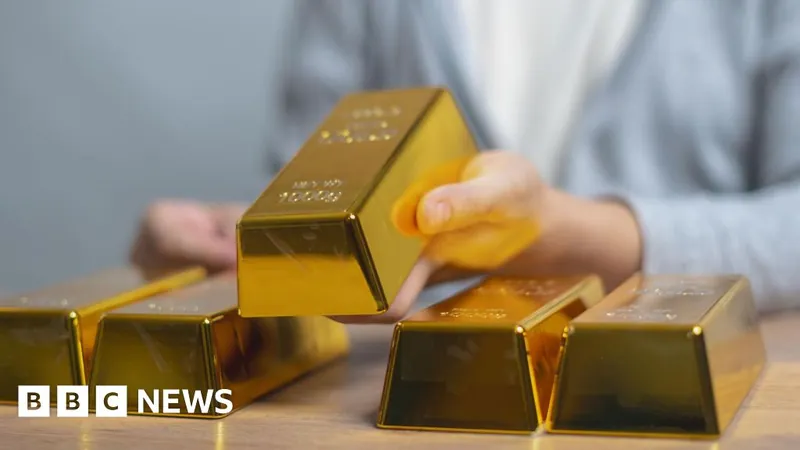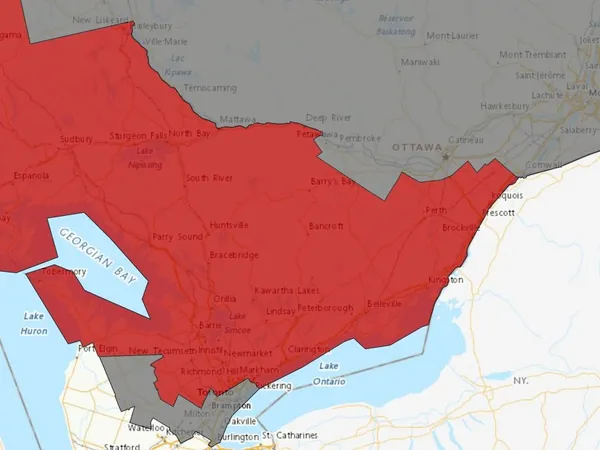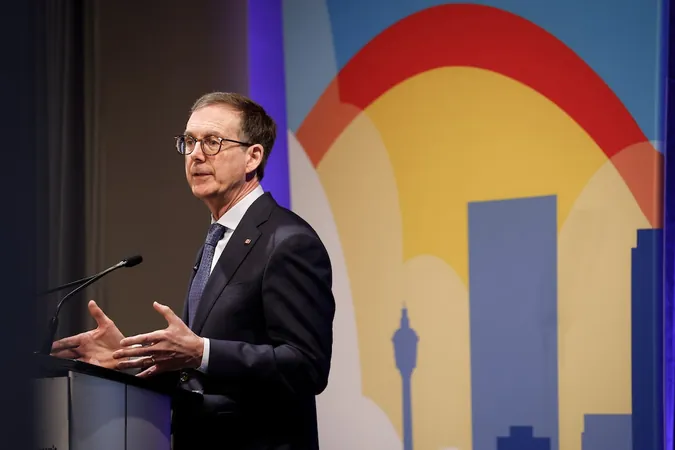
Gold Soars to $3,000 Amid Intensifying Trade Wars and Economic Uncertainty
2025-03-14
Author: Sophie
In an unprecedented turn of events, the price of gold has surged past the $3,000 per ounce threshold for the first time ever, reaching a peak of $3,004.86 last Friday. This remarkable increase of 14% since the dawn of 2025 signals a growing demand for the precious metal, driven by rising economic uncertainties catalyzed by escalating global trade tensions.
Gold is historically considered a safe haven asset, attracting investors during turbulent economic climates. The ongoing trade war primarily between the United States and key global trading partners has injected considerable instability into the financial markets, generating anxiety about potential economic repercussions that might ripple across consumers and businesses worldwide.
The situation has been exacerbated by the implementation of various tariffs—taxes enforced on imported goods—which have sparked fears of inflation as businesses grapple with increased costs. These additional expenses are often transferred to consumers, leading to an uprising in living costs. Recently, President Donald Trump escalated this conflict by threatening a staggering 200% tariff on alcoholic beverages imported from the European Union, marking a significant escalation in trade hostilities. This move follows the EU's proposal of a 50% tax on US whiskey imports, a clear retaliation against Trump's earlier blanket tariffs on steel and aluminum imports from multiple countries.
Furthermore, Trump has imposed a minimum 20% levy on imports from China, further stoking the flames of trade conflict. Analysts believe that in this environment of political and economic upheaval, the allure of gold remains robust. According to Suki Cooper, a precious metals analyst at Standard Chartered, "In a backdrop of geopolitical uncertainty and ongoing tariff changes, appetite for gold remains strong."
Victoria Hasler, head of fund research at Hargreaves Lansdown, recognizes two primary factors fueling the rise in gold prices. "Trump's tariffs and the tumultuous geopolitical landscape, including tensions in the Middle East and the Russia-Ukraine conflict, contribute to the overarching uncertainty that markets abhor," she notes. "This dynamic is propelling gold prices to record highs."
Additionally, central banks around the globe are making substantial investments in gold, indicating a strategic move to diversify their reserves away from the US dollar. The World Gold Council revealed that central banks collectively added a staggering 1,045 tonnes of gold to their reserves last year, marking the third consecutive year of acquisitions surpassing the 1,000-tonne mark. Investment director Russ Mould emphasized that we are currently witnessing an "era in which gold is really starting to shine."
Historically, peaks and troughs in the price of gold have coincided with significant events in economic history. For instance, during the 2007 onset of the global financial crisis, investors flocked to gold as a safe haven, driving its price higher. With ongoing concerns tied to inflation, stagflation, and the effectiveness of tariffs in funding proposed tax cuts by the new US administration, the reasons behind gold's powerful resurgence are complex yet undeniable.
As the world watches developments in trade negotiations and monetary policies, investors will likely remain vigilant in their pursuit of gold, weary of the uncertainty that looms over the global economy. Is gold set to continue its meteoric rise, or will external pressures bring it back down to earth? Only time will tell.









 Brasil (PT)
Brasil (PT)
 Canada (EN)
Canada (EN)
 Chile (ES)
Chile (ES)
 Česko (CS)
Česko (CS)
 대한민국 (KO)
대한민국 (KO)
 España (ES)
España (ES)
 France (FR)
France (FR)
 Hong Kong (EN)
Hong Kong (EN)
 Italia (IT)
Italia (IT)
 日本 (JA)
日本 (JA)
 Magyarország (HU)
Magyarország (HU)
 Norge (NO)
Norge (NO)
 Polska (PL)
Polska (PL)
 Schweiz (DE)
Schweiz (DE)
 Singapore (EN)
Singapore (EN)
 Sverige (SV)
Sverige (SV)
 Suomi (FI)
Suomi (FI)
 Türkiye (TR)
Türkiye (TR)
 الإمارات العربية المتحدة (AR)
الإمارات العربية المتحدة (AR)